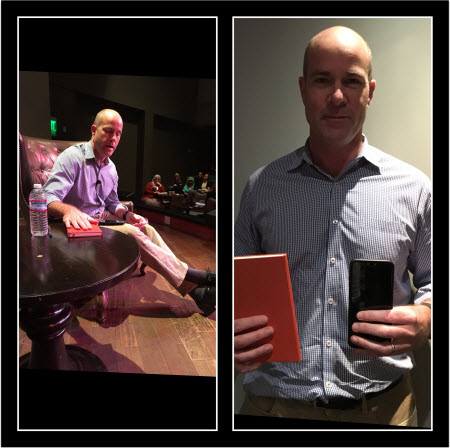
Yesterday, I was honored to fill in as MC and interviewer for Darian Rodriguez Heyman at the Nonprofit Fundraising Masters event. (Darian was welcoming his first child, a boy, into the world!). The event, a one-day conference designed to share the world’s most successful fundraisers’ secrets to success, most valuable tips and tools, and sources of inspiration. I did 6 fireside chats with Chuck Collins, YMCA; Annie Leonard, GreenPeace; Stephanie Bray, United Way; Michael Brune, Sierra Club, Paul Rice, Fair Trade, USA and Lynee Twist, Soul of Money. In addition, facilitated a peer learning exchange called “Solution Salon.”
Darian authored the best-selling Nonprofit Fundraising 101, the first truly comprehensive yet practical guide to all aspects of fundraising. So this event builds on that experience by interviewing master level fundraisers to unearth their wisdom and experience. There was an incredible amount of fundraising trade craft shared, including stories and lessons about getting turned down for a major as well as nailing a large gift. But, given my recent book, The Happy Healthy Nonprofit: Strategies for Impact without Burnout, I was really interested in how these thought leaders answer this question: “When the going gets tough, how do you stay inspired?”
While their answers and anecdotes were different, one simple technique or theme came across: “Stay connected to the source of your work.”
What this means is being able to see and experience first hand the impact of your organization’s programs and how those programs transform people. For Chuck Collins, YMCA CEO, “It is all about the kids!” He routinely goes on site-visits into programs to see and understand the program’s impact. He also keeps a file of emails and letters from participants that share their personal transformations from participating in the program. Whenever he feels discouraged, he reads through that file.
Lynne Twist said something that we heard before while researching for the book, “Burnout is bullshit!” What Lynne meant is that she has the self-awareness to know when she is feeling stressed or too disconnected from the work, she says she feels it in her body. That’s her cue to go out side for a walk, get away from the screen, and have some reflection time to think the impact of her fundraising beyond the dollars. As she so eloquently said, “fundraising is an act of love. ”
Mike Brune, CEO Sierra Club, also finds going outdoors on hikes to be inspiring and keep him connected to his organization’s work and to escape the craziness of being in an office. I asked Mike how is able to incorporate solo reflection time into his day – when there are pressures like the to do list, back-to-back meetings, deadlines, and emails to answer.
Mike blocks out time for solo thinking and reflection on his calendar and they avoid scheduling meetings one day week (Friday). He admits that they can’t always stick to it, but try to the majority of the time. He uses this time for thinking, planning, reading, or writing – the work that is best done solo. He gives himself over a solid hour or more and often leaves the office. He also shared that he uses a notebook and pen for this solo thinking time. He puts all his to do and tasks on his phone – so there is a separation of thinking/reflection time and tasks.
Do you leave empty spaces on your calendar to do this time of work, but find it often gets taken up by meetings or phone calls. When you intentionally block out that “free space” into thinking meetings with yourself and keep that time scared, you’ll be able to step back and think about the big picture or just be more creative with current work.
Making room for reflection is essential for leaders and provides a strategic imperative, but often we don’t do it for ourselves or embed into the workplace culture. How do you make time for reflection and being inspired by your work? How is this embedded in your nonprofit’s culture?
Beth Kanter is a consultant, author, influencer. virtual trainer & nonprofit innovator in digital transformation & workplace wellbeing.

Leave a Reply